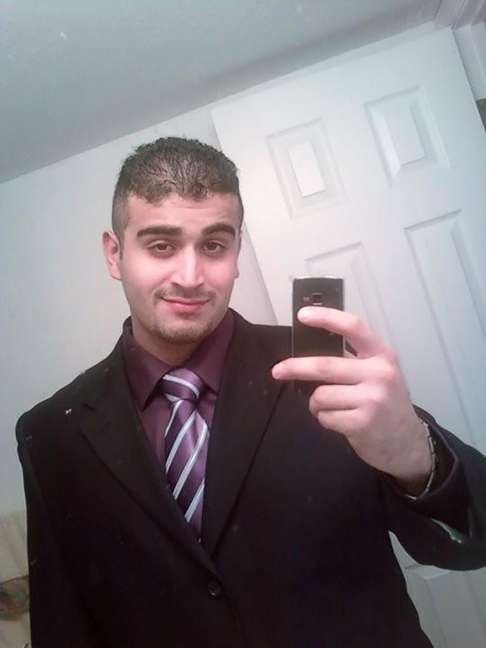
Analysis: Orlando rampage reflects frightening convergence of terrorism and mass shootings
The deadly attack at an Orlando nightclub early Sunday is raising serious concerns among global security experts and criminologists about a convergence between terrorism and the American phenomenon of mass shootings.
Armed with an AR-15 - the weapon of choice for mass shooters - Omar Mateen pledged allegiance to the Islamic State during an attack that killed 50 people at a popular gay club called Pulse, authorities said. The rampage echoed several recent high-profile terrorist attacks on US soil in which extremist sympathisers used firearms instead of explosives, once a terrorism staple.
Nidal Malik Hasan, a follower of radical imam Anwar al-Awlaki, gunned down 13 people in 2009 at Fort Hood, Texas. Last July, Muhammad Youssef Abdulazeez, seeking martyrdom, fatally shot five service members in Tennessee. And late last year, not long after terrorists in Paris shot up cafes and a theatre, a radicalised couple in San Bernardino, California, killed 14 people at an office holiday party.

Terrorism and mass shooting experts say the use of firearms in terror attacks, particularly among lone wolves, is probably not a coincidence. For attackers without direct ties to experts in terrorist networks, the nearly 60,000 gun dealers in the US offer plenty of high-calibre options.
“It’s becoming increasingly apparent that mass shootings can be just as deadly as bombings,” said Adam Lankford, a University of Alabama criminal justice professor and author of a book on mass shooters and suicide bombers. “And the scary part is that it’s often much easier to pull off.”
With a bomb, it’s sudden and over. With shooting, you have tremendous power and control over your victims
Making bombs is complicated. Buying materials and seeking assistance from others - online or in person - can tip off law enforcement officials. And bombs have a way of either blowing up attackers during construction or failing to detonate when needed.
“It’s much easier to purchase and learn how to shoot a gun than it is to learn how to make a bomb,” said James Alan Fox, a Northeastern University professor who studies mass killings. “You have more tactical control with a gun than a bomb.”
And there are psychic rewards, too, for radicalised mass killers.
“There’s a certain level of satisfaction they can get by shooting people,” Fox said. “With a bomb, it’s sudden and over. With shooting, you have tremendous power and control over your victims. One by one you can see them suffer and die.”
Statistics on terrorist tactics generally involve completed attacks, not those that have been disrupted, so it’s difficult to know with precision how terrorist playbooks are evolving, according to William Braniff, the executive director of the National Consortium for the Study of Terrorism and Responses to Terrorism (START).
But the group’s statistics offer clues.
From 1970 to 2014, explosives were the primary weapon in more than half of terrorist attacks in the United States, according to START. Several times during that period, no firearms were used in U attacks. But in 2014, 14 of the 29 terrorist attacks involved firearms. And START’s research shows that between 1970 and 2014, 40 per cent of terrorist attacks with firearms were deadly, versus 4 per cent in attacks without guns.
“Firearms are available, lethal and frankly they get a lot of media attention,” Braniff said. “As a country, we obsess over it. We have a gun culture.”
And what makes the potential convergence so terrifying, experts said, is that defending against mass shootings in public places, whether by extremists or psychopaths, is nearly impossible.
After James Holmes killed 12 people at a Colorado movie theatre in 2009, theatre chains added security and metal detectors. Experts say the measures reflect the way policymakers and businesses often deal with mass shootings - protecting against the last attack, not the future ones that are more difficult to imagine and predict.
— Nic Hornstein (@nichornstein) June 12, 2016
“We tend to react to the latest episode as if it’s the same way every time,” said Fox, the Northeastern professor. “There are plenty of ways they can get us, and if we respond by having an armed guard at every night club, there’s plenty of other places that will still be vulnerable.”
Fox argued that extreme security measures actually give terrorists what they want.
“The thing about terrorism is that we wind up victimizing ourselves,” he said. “We’ve seen it in airports, inconveniencing ourselves well beyond what’s appropriate. That plays into the desire of terrorists. They don’t just want us dead. They want us to suffer.”
What are the solutions?
The gun lobby has one: More guns, so good guys with guns can kill bad guys with guns.
The National Rifle Association called for more armed guards after Adam Lanza killed 20 first-graders and six adults at Sandy Hook Elementary School in 2012. But school officers have been present at other school shootings, including the 1999 massacre at Columbine High School.

